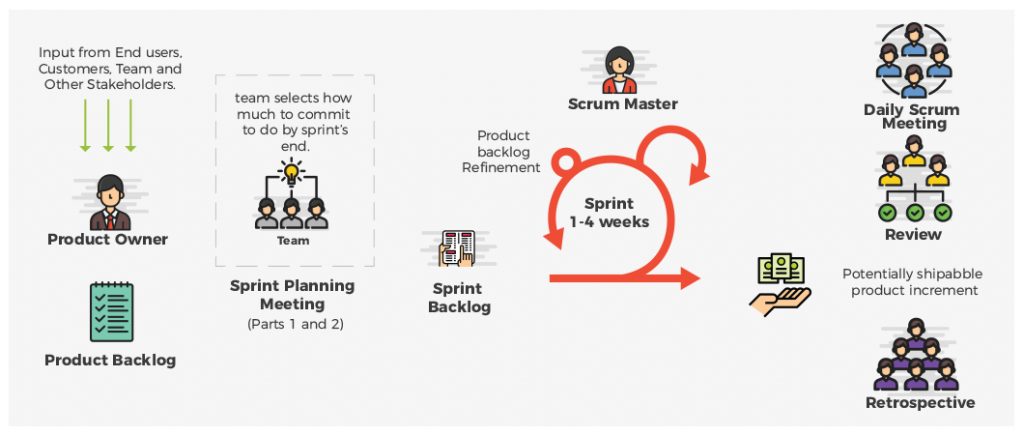Last updated on November 28th, 2022
Companies such as WordPress, Treehouse, Basecamp, and Stack Exchange believe in the distributed model quite strongly. That apart, even as far back as 2015, over 150 startups are almost 50% distributed. With increasing globalization and improved communication technologies, distributed teams have become the norm today. Distributed models, especially when using agile can bring flexibility and better collaboration among your team members. This can allow you to engage the best talent without the constraint of time or place and also result in cost savings for your company.
However, you may face numerous challenges in implementing the distributed model using the agile product development approach, if your key processes, tools, and people are not in place. Here are some tips on using the agile model in a distributed environment that we have found useful – and you may too.
But first, let’s highlight some features of agile product development!
- The methodology of agile product development is based on iterative and incremental development. Solutions arise as a result of collaboration among cross-functional and
self-organized teams. - Agile was mainly developed for enabling your teams to manage and work together with ease and at the same time manage an ever-changing scope and deliverables list for every product version.
- Agile is key for your product development as it allows efficient management of workloads in an independent manner through the establishment of cross-functional teams.
- With Agile, your team can be more actively involved in problem-solving over the entire process and can also foresee possible issues that may need solving.
- Agile is made specifically to reduce cost of development
Top Tips For Achieving Success With Your Distributed Agile Product Development Teams
- Agile methodologies involve shorter development cycle with project assessment done at different stages throughout the process. The members of your product development team can carry out sprints regularly which will assist in continuous evaluation and assessment of every phase of your development cycle. We recommend conducting iterations every 1-2 weeks depending on the requirements of your project. This helps in tracking your team’s progress at all times. Besides, product increments could also be suggested by your team members at the end of the iterations. This may lead to the addition of useful features that can enhance the value of the product.
- We recommend that you spend some quality time in planning for the upcoming sprints as interdependencies can be identified earlier in your product lifecycle. You can also plan for your backlogs in advance.
- You can carry out usability testing with the local teams to assess the reaction of your end-users under real conditions. We think it may be worthwhile to test the product functionalities using the local audience to get complete feedback on your product usability.
- Reviewing your code for improving quality is key. This may be essential in bridging the knowledge gap which may exist between your employees working across remote locations. Finally, you need to ensure that your code is always accurate, easy to interpret by each team member and can be maintained effortlessly.
- You need to set up scrum meetings daily as they help in connecting your team members with each other and address critical questions related to each phase of your product development process. Your team will then be able to understand what has been achieved so far and what else needs to be done further to achieve progress on that front. They may also be able to find out any obstacles that may arise later in the process. We believe it’s also essential to focus on test-driven development. This will help you identify issues at the earliest and resolve them immediately.
- Communication is the key to managing your agile product development team. The use of the right tools can help in improving the process and the outcomes. There are different tools and techniques which you may use for collaborating and communicating with your team members. The selection of these tools may depend on different factors such as the size of your team, your project requirements, and the type of project your team is managing at present.
- You need to organize regular meetings between your product owner and your team members to discuss different aspects of the product. There must be a proper flow of information from your product owner to your team members. This helps in communicating the most current requirements to them at all times.
Conclusion:
Agile product development can help you achieve your product milestones faster and roll out more releases on an ongoing basis. To get the full benefit from Agile though, your distributed product development team must be managed well. This calls for a focus on better communication and collaboration, while still adhering to the best Agile practices. Does your product development pass the Distributed Agile test?
If you’re debating whether it has to be one or the other between Agile and DevOps, refer to our article. If you’re curious and want to know all about Agile Product Development, refer to this Wikipedia article.



